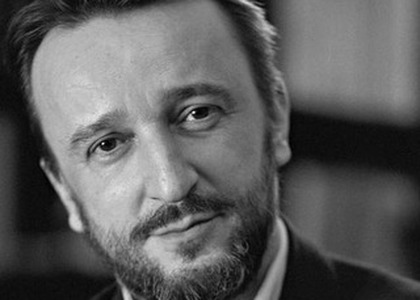> [Archived] Interviews

Interview with Eugen Ciurtin, a consistent supporter of recovering Enescu's manuscripts
In January 2024, an unpublished letter about Romeo Drăghici, the executor of Enescu's will and the first director of the national museum bearing the great composer's name, was rediscovered in Dorohoi. Eugen Ciurtin, the director of the Institute for the History of Religionsof the Romanian Academy and the leader of the "Sonotheism: Religion in Enescu" project, who participated in the retrieval and deciphering of the letter, spoke with our colleague Ariadna Ene-Iliescu.
What importance does the recently found document hold in the research on Enescu's manuscripts?
Thank you for the invitation and the question. Indeed, this 1980 letter, preserved at the "George Enescu" Memorial Museum in Dorohoi and belonging to Romeo Drăghici, a Securitate agent and the founder of the "George Enescu" National Museum in 1958, essentially confirms that he possessed fragments from Enescu's heritage. He and his wife donated these fragments to the Romanian state to showcase them in the Enescu Museum. The letter also sheds light on the political and social context in which he sold such manuscripts, materials, and documents that were part of Enescu's legacy intended for the general public, both national and international. It is a document that constitutes a historical exposé, penned nearly half a century ago in an exceptionally harsh tone directed at a curator from Dorohoi. Previously undeciphered, the document was preserved by Lidia Alexie, curator at the Dorohoi Museum. Consequently, what we indirectly demonstrated in 2021-2022 regarding stolen Enescu documents sold at auctions and bearing the stamps "Collection" and "Donation by Romeo Drăghici" is now directly confirmed by this document.
So, could one arguethatthere are now indisputable pieces of evidence to accuse Romeo Drăghici?
Indisputable evidence existed before, too, and no one contested them. I had to provide new irrefutable proof in a series of articles in 2021-2022, showing that what was sold at auctions had belonged to Enescu and had been stolen by Drăghici. In 2010 and 2011, musicologist and singer Ioana Voicu-Arnăuțoiu established that, according to CNSAS files,in January 1957, Romeo Drăghici was not just a collaborator but an agent of the Securitate. In the meantime, together with Minister Counselor Monica Joița, we were able to review and prepare for publication various files from the diplomatic archives of the Ministry of Foreign Affairs. These files reveal the rather scandalous circumstances surroundingthe acquisition of the musician's entire personal archive in Romania, both from Romania, including his residence at CaleaVictoriei 141, behind the Enescu Museum, as well as from Paris or later through MarucaCantacuzino from Switzerland. This archive consists of no less than 200 kilograms of music. As we already know, Enescu's archive holds over 6000 pages of his music, the majority of which is stored at the Enescu Museum.
In your opinion, where is the initiative to make all of Enescu's manuscripts public heading?
I believe I can quote what Enescu said about himself in June 1946: "Some works from my childhood and study years will be edited, to the extent possible, in editions that are as economical as feasibleand in a limited number, serving a documentary purpose." This has only just begun. Maestro Gabriel Bebeșelea is among the key figures in the entire history of studying Enescu's unpublished manuscripts, promoting such works, whether completed, very close to completion, or reworked by maestros like Cornel Țăranu-as in the case of the unfinished oratorio "Strigoii," written in 12 days in the autumn of 1916. The historical study of Enescu's legacy is now thoroughlyrevitalizedsince the main things that were known or tacitly accepted by everyone are, in fact, much more fragile when confronted with this unpublished and unsettling evidence, and they span over broader areas of the entire history of Romanian communism in the '50s-'60s and later. Regarding the reception of Enescu's complete musical oeuvre, we can see that it is entering a new period. Much remains to be done in this direction, following the footsteps of the main musicians and musicologists who laid the foundation for any endeavor of this kind, namely Pascal Bentoiu and Clemansa Liliana Firca.
Translated by Alina-Gabriela Ariton,
University of Bucharest, Faculty of Foreign Languages and Literatures, MTTLC, year I
Corrected by Silvia Petrescu














